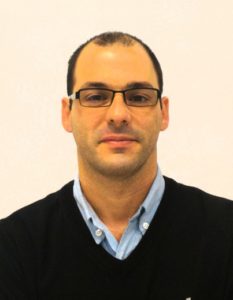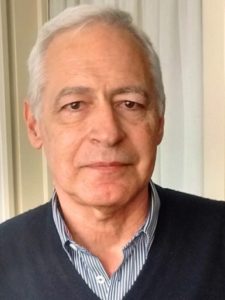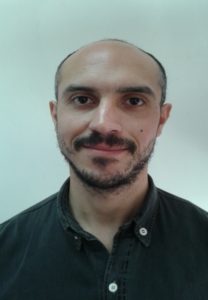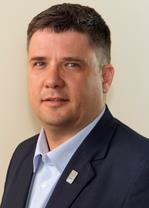 Ricardo José Scorza, Metallurgical Engineer, National Chemical Technician. Head of the Central Laboratory of the Córdoba plant Volkswagen Argentina S.A. Chief of practical work in fluid mechanics Metallurgical Engineer UTN-FRC. Specialist administration and organization of materials testing laboratories. Expert in conventional vacuum heat treatment and low alloy steels.
Ricardo José Scorza, Metallurgical Engineer, National Chemical Technician. Head of the Central Laboratory of the Córdoba plant Volkswagen Argentina S.A. Chief of practical work in fluid mechanics Metallurgical Engineer UTN-FRC. Specialist administration and organization of materials testing laboratories. Expert in conventional vacuum heat treatment and low alloy steels.
Abstract of semiplenary conference:
Low Pressure Vacuum Carburizing Heat Treatment
To obtain toothed components, gears mainly, in the automotive industry, in particular where is used steels like SAE 8620 and its variants, the thermal treatment is currently dominated by two types of technologies. One of these technologies is the carburizing in gaseous atmosphere, commonly named Endogas with direct injection of gas, like natural gas, propane or other gases, with a final oil quenching; this type of process is called conventional treatment. On the other hand a second technology is a vacuum carburizing, which every day becomes more weight in the world, with the possibility of combining this method of cementation with high pressure gas quenching, eliminating the need to use quenching oils. The Technology of vacuum cementation with gas quenching offers some advantages over conventional treatments.,en
For the development of this subject will be exposed the following topics: Introduction to heat treatment technology of low vacuum carburizing of low alloy steels for cementation. Main characteristics of the equipment needed. Physic aspect cementation process. Metallurgical aspects of the process, form of absorption and diffusion of carbon, control parameters cementation, computerized process modeling, prediction and measurement of results. High pressure gas quenching. Comparative of advantages and disadvantages between vacuum carburizing and conventional treatment furnaces.,en
 Jorge Alberto Halabi, Metallurgical Engineer - Catholic University of Cordoba - 1975. Plant Manager Heat Treatment Sudosilo S.A. - Heat Treatment and Surface Engineering. Teaching Materials II Titular and Industrial Processes - Catholic University of Cordoba.. Director of Research Project "Development of composite materials based on biodegradable polymers" - Catholic University of Cordoba.. With extensive experience in thermal and thermochemical treatments of metallic alloys. Participation in various developments heat treatment process Controlled Atmosphere, Nitrocarburizing Gaseous Deep, induction hardening and combination of these processes, as well as treatment of light alloys, CVD (Chemical Vapor Deposition), etc. Responsible for project development PVD (Physical Vapor Deposition) in Sudosilo S.A. intended for application of coatings with thin ceramic layers based nitrides and carbonitrides of titanium, chromium, aluminum and combinations thereof and integration nanoparticulate multilayer compounds. He has publications both disclosure and refereed scientific journals. He has participated in conferences as a guest at the Univ. Del Valle in Cali, Colombia and Rio de Janeiro by the Brazilian Association of Metals. He has attended numerous international conferences on his specialty in different countries. He has taught courses and conferences at national level as Argentine Steel Institute, Atomic Energy Commission, INTI, UTN, Univ. Catolica de Cordoba, Argentina Nanotechnology Foundation, along with others in the private sector.,es
Jorge Alberto Halabi, Metallurgical Engineer - Catholic University of Cordoba - 1975. Plant Manager Heat Treatment Sudosilo S.A. - Heat Treatment and Surface Engineering. Teaching Materials II Titular and Industrial Processes - Catholic University of Cordoba.. Director of Research Project "Development of composite materials based on biodegradable polymers" - Catholic University of Cordoba.. With extensive experience in thermal and thermochemical treatments of metallic alloys. Participation in various developments heat treatment process Controlled Atmosphere, Nitrocarburizing Gaseous Deep, induction hardening and combination of these processes, as well as treatment of light alloys, CVD (Chemical Vapor Deposition), etc. Responsible for project development PVD (Physical Vapor Deposition) in Sudosilo S.A. intended for application of coatings with thin ceramic layers based nitrides and carbonitrides of titanium, chromium, aluminum and combinations thereof and integration nanoparticulate multilayer compounds. He has publications both disclosure and refereed scientific journals. He has participated in conferences as a guest at the Univ. Del Valle in Cali, Colombia and Rio de Janeiro by the Brazilian Association of Metals. He has attended numerous international conferences on his specialty in different countries. He has taught courses and conferences at national level as Argentine Steel Institute, Atomic Energy Commission, INTI, UTN, Univ. Catolica de Cordoba, Argentina Nanotechnology Foundation, along with others in the private sector.,es
Abstract of semiplenary conference:
Ceramic Physical Vapor Deposition
The thin film coatings applied in a vapor phase are part of a large family of processes ranging from a simple coatings film produced by the sublimation of an element in a vacuum environment and its condensation on a substrate, up to ceramic high temperature hard coatings, synthesized as a result of the activation of electric plasma. The PVD (Physical Vapor Deposition) cover this family of processes.
The fields associated with this technique include decorative applications, improvement of mechanical strength, corrosion protection, uses in electronics and medicine among others. They are thin films ranging from a few atomic layers to some micrometers, depending on the process.
Varying degrees of complexity arise depending if direct evaporation, reactive evaporation or the activated reactive evaporation is applied. Also, the evaporation method of the components, the substrate-coating compatibility, the vacuum and polarization levels are key variables that constitutes the final applied product characteristics.,en
 Víctor Alejandro Burgueño, Is a graduate engineer Institute Sabato materials and industrial quality specialist graduate of the Institute of Industrial Quality (INCALIN). It is specialist recognized by the American Welding Society, ASME and the International Institute of Welding Welding. It is certified welding inspector level III. Develops its main activity in the National Institute of Industrial Technology (INTI) by the Ente certification of welders and welding procedures.,es
Víctor Alejandro Burgueño, Is a graduate engineer Institute Sabato materials and industrial quality specialist graduate of the Institute of Industrial Quality (INCALIN). It is specialist recognized by the American Welding Society, ASME and the International Institute of Welding Welding. It is certified welding inspector level III. Develops its main activity in the National Institute of Industrial Technology (INTI) by the Ente certification of welders and welding procedures.,es
Abstract of semiplenary conference:
Actual state and improving matters on welding quality on the metalworking industry
Generally welding processes are widely used by the metalworking industry, both for manufacturing and for repairing activities. Welded product quality depends mainly on the quality of the welds. In this regard the risks associated to welding are four types of deviations: imperfections, distortion, residual stresses and metallurgical changes. The fact that the metallurgical changes are impossible to be evaluated, without destroying the workpiece, makes the welding process is considered as a special process for most industrial welding. At this conference will be presented the tools available in the Argentine market for control of welds and their application in the industry in general.,en
 Jorge Ernesto Schneebeli He is a graduate mechanical engineer from the Faculty of Engineering of the University of Buenos Aires and specialist in industrial quality graduate of the Institute of Industrial Quality (INCALIN). He specializes in Non-Destructive Testing methods described in Ultrasonics, Industrial Radiography, Penetrant, Eddy Current and magnetizable particles. Develops its main activity in the National Institute of Industrial Technology (INTI) since 1989. He is currently the Director of the Center for Research and Development in Mechanical and is responsible for the management of Special Projects of that institution. He also teaches at the Buenos Aires Regional Faculty of the National Technological University (UTN FRBA) and the University of San Martin (UNSAM).,es
Jorge Ernesto Schneebeli He is a graduate mechanical engineer from the Faculty of Engineering of the University of Buenos Aires and specialist in industrial quality graduate of the Institute of Industrial Quality (INCALIN). He specializes in Non-Destructive Testing methods described in Ultrasonics, Industrial Radiography, Penetrant, Eddy Current and magnetizable particles. Develops its main activity in the National Institute of Industrial Technology (INTI) since 1989. He is currently the Director of the Center for Research and Development in Mechanical and is responsible for the management of Special Projects of that institution. He also teaches at the Buenos Aires Regional Faculty of the National Technological University (UTN FRBA) and the University of San Martin (UNSAM).,es
Abstract of semiplenary conference:
Importance of Non Destructive Testing Personnal Certification for Industry
In the industrial field it is essential to have qualified staff to perform critical activities. In the case of Non Destructive Testing (NDT), they are widely inspection methods used for quality control of parts, components or equipment, both during the manufacturing process and service. Being methodologies tests involving performances in which the operator plays an important role, it was necessary to develop validation schemes to carry out such activities skills.
During the presentation, aspects involved in performing the END will be described, as well as the National System of NDT personnel Certification and their comparison with similar schemes in the world will be exhibited.


